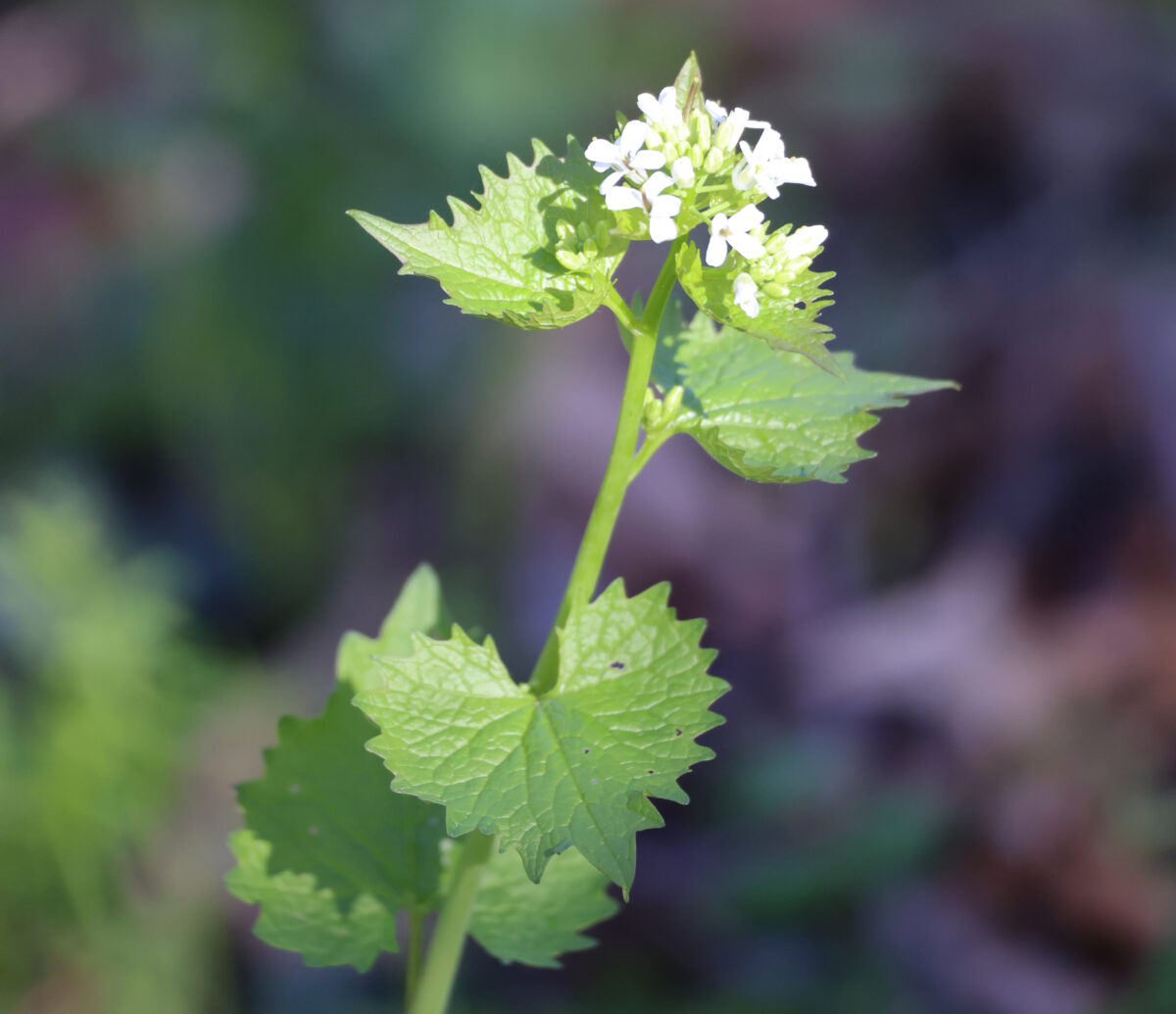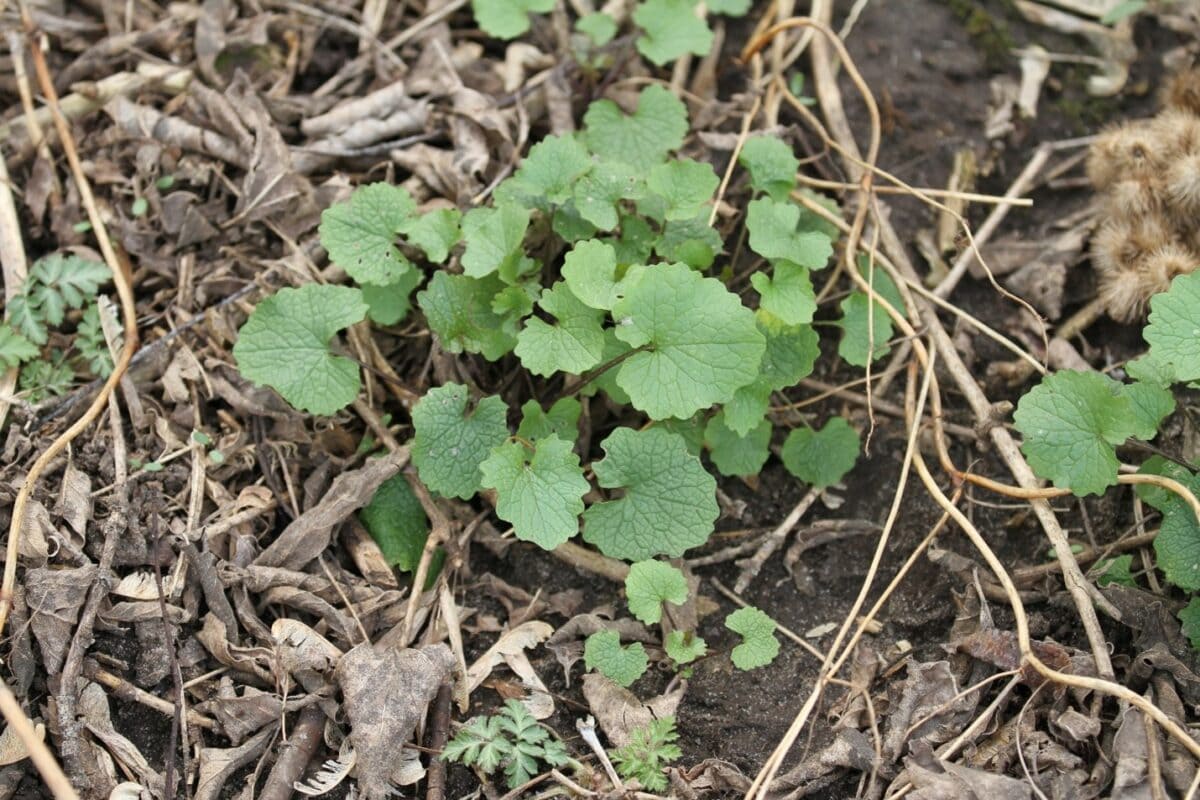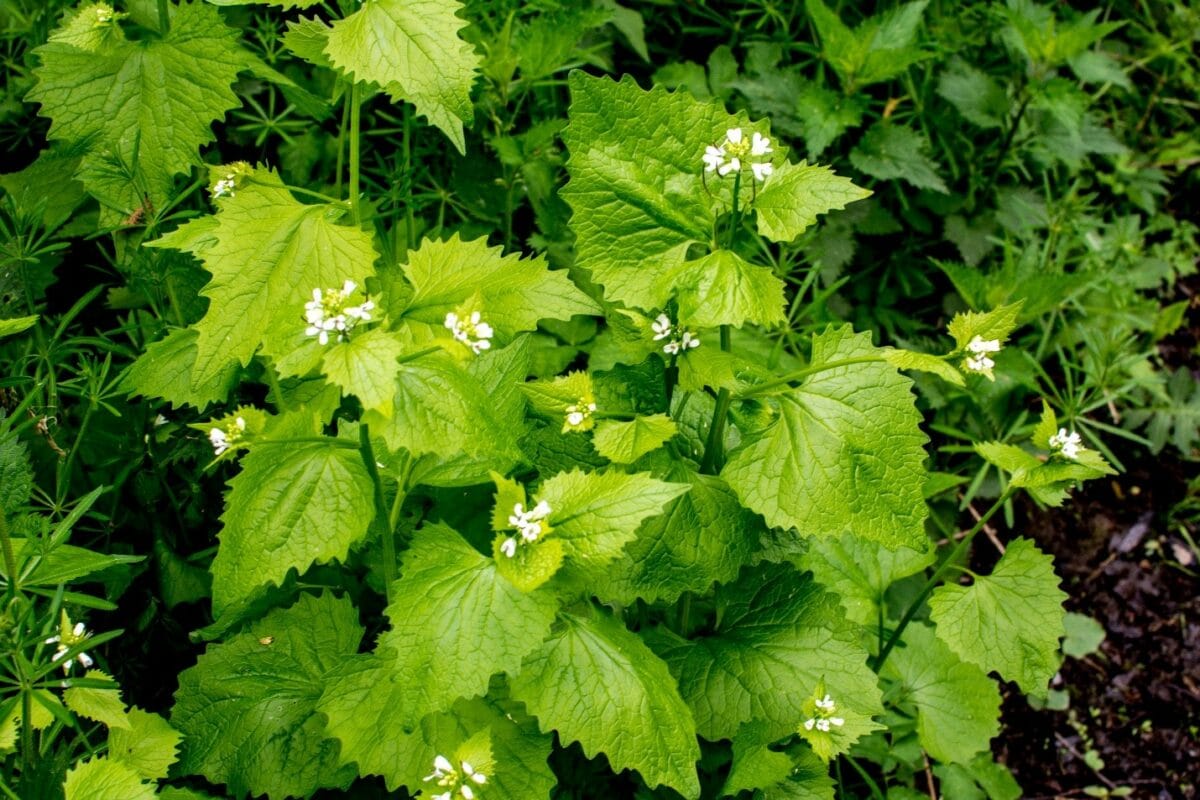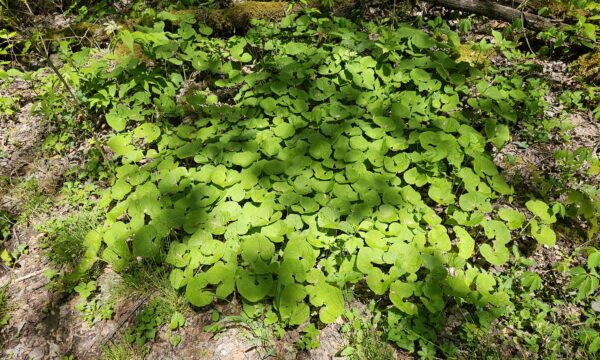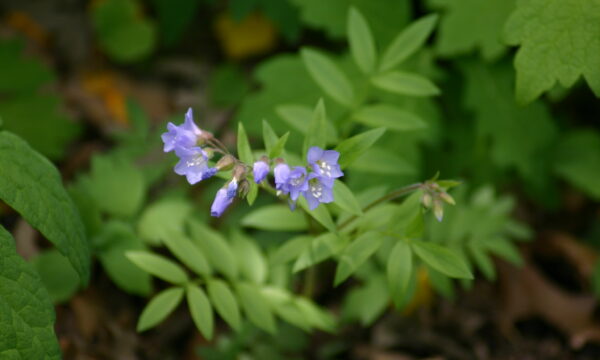
Mark Micek
Tallgrass Restoration, Project Ecologist/Burn Boss
If you ever volunteered at your local forest preserve, you may find yourself in the woods pulling garlic mustard. Some organizations across the country even hold competitions to see who can pull the most. But what is it about garlic mustard that makes naturalists want to pull so much, and what should you do if you find some in your own garden?
What is Garlic Mustard?
Garlic mustard is one of the earliest weeds that we have to contend with in our woodlands and savannas every spring. It is an extremely aggressive biennial species that can easily overcrowd and overshadow our more desirable native spring ephemerals.
Where Did it Come From?
Brought to the United States from Europe to be used for food and herbal remedies, garlic mustard was introduced into the wild and slowly began to establish itself in woodlands. With no natural predators or competition, there was little that could be done naturally to stop its spread.
What is its Life Cycle?
Garlic mustard is a biennial which means that it completes its life cycle in two stages (years). In the first year, it presents as a low-lying rosette with heart-shaped leaves. These rosettes can often be seen covering the forest floor and will even stay green throughout the winter. In the spring of its second season, the rosette will send up a stalk that will develop little white flowers at the top. If allowed to go to seed, the plant will develop seed pods similar to others in the mustard family. Before the end of spring, the pods will ripen and then the seeds will be knocked loose in the wind, or as critters brush up against the plant. The seeds don’t travel too far unless they hitch a ride on someone or something, so the plants tend to grow in colonies that radiate outward from where they started.
How Can You Control it?
Luckily, garlic mustard can be controlled through several different means, including means that don’t involve chemicals. Small patches can easily be hand pulled from soft ground. As long as you remove most of the root, there is little chance that the plants will resprout. Be sure to properly dispose of the plants; pulled garlic mustard can still go to seed, especially if it has been flowering for a week or more.
Mowing the plants as low as possible can also be effective. It is important to shred the stalks to prevent the possibility of them seeding after cutting. Cutting them lower to the ground reduces the chances of them resprouting, but you will need to mow them a second time during the growing season to prevent them from coming back and setting seed. It might take several seasons of repeated mowing to ultimately control garlic mustard.
Finally, herbicides can be applied effectively outside of the growing season while the garlic mustard leaves are green, and the surrounding native vegetation is still dormant. Always follow the directions on the label if you do use herbicide.
What Can You Plant Instead?
While it’s not the most attractive invasive plant in the world, removing garlic mustard will leave plenty of soil ripe for planting native woodland plants. A variety of plants can serve as excellent ground cover. Wild ginger (Asarum canadense) has attractive, heart-shaped leaves that can form dense clusters. Jacob’s ladder (Polemonium reptans) can add some color to your woodland and attract pollinators with its bluish-purple spring flowers. Wild Strawberry (Fragaria virginiana) will provide not just ground cover in less shaded areas, but food for your local wildlife with its fruit and flower nectar.
For more information on garlic mustard:

